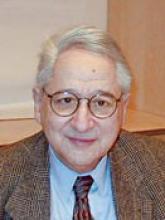Proving that cigarette smoking leads to negative health consequences has taken many years. It was President John F. Kennedy who in 1962 created a blue ribbon panel to study the effects of smoking and lung cancer, as well as other cancers and cardiovascular disease. Starting with the seminal 1964 report, numerous surgeons general have made strong cases for these links. The downward trend of cigarette smoking among physicians suggests that we have heeded these warnings.
In the late 1940s, 60% of physicians smoked cigarettes. By the time the surgeon general issued the 1964 report on the health benefits of smoking cessation, 30% of physicians smoked. The prevalence of smoking among physicians continued to decline in the 1960s. In the early 1980s, surveys showed that 5%-10% of physicians smoked cigarettes. By 2006-2007, the prevalence of physicians who smoked cigarettes had declined to 2% (Nicotine Tob. Res. 2010;12:1167-71).
Smoking never appealed to me, and I never started. However, early in my career, I grew concerned about smoking as a public health issue. When I told my father, an eye surgeon (who also did not smoke), that I wanted to pursue psychiatry, he encouraged me to learn an aspect of the specialty that few others knew and to develop that area as a subspecialty. That proved to be great advice. After all, I was underwhelmed by the absolute unsubstantiated dogma that dominated traditional talk therapies in psychiatric training at the time.
Soon after my residency, I started learning about hypnosis, behavior modification, and the emerging discipline of cognitive-behavioral therapy. I spent several years learning and working with the late Dr. Herbert Spiegel, a superb psychiatrist and nationally known expert in hypnosis. Dr. Spiegel and his son, Dr. David Spiegel, wrote the classic book Trance and Treatment: Clinical Uses of Hypnosis, 2nd edition (Washington: American Psychiatric Association, 2003). From there, I started a short-term psychotherapy program in the mid-1970s at NYU Langone Medical Center/Bellevue – first using hypnosis in the treatment of smoking cessation. I continue to use this strategy today.
Although I have modified my approach to smoking cessation from the original Spiegel technique, after almost 4 decades of using hypnosis for smoking cessation, I still find the Hypnotic Induction Profile (HIP), as developed by the Spiegels, to be the easiest way to measure hypnotizability. This technique involves teaching the patient self-hypnosis within a 5- to 10-minute period after taking his health and smoking history.
Besides aiming to help motivated people stop the life-threatening and addictive smoking habit, the use of hypnosis in treating smoking cessation empowers the patient to take control of the addiction and habituation that smoking creates. Instructing the individual in what can be a lifelong process in the use of hypnosis regularly on his own reinforces the original treatment program and makes this approach successful. This is comparable to following a diet-exercise plan.
Another great advantage of using medical hypnosis for smoking cessation is that doing so eliminates the use of powerful medications, including patches, and even needles (as in acupuncture). Such medications have potential side effects.
During the first 10 years of my smoking cessation work, follow-up phone calls were used to determine success. My team and I discovered a success rate of about 30% with responders over a 6-month period.
Today, we understand that smoking affects almost every organ system and is the No. 1 cause of preventable disease and death worldwide.
In the current political environment – in which the emphasis on austerity is leading to enormous cutbacks in health care funding and restrictions by insurers at all levels of care – it would seem that recognizing cigarette smoking as the leading preventable cause of death and disease would be addressed and controlled in a logical way. In fact, if a food or beverage had a fraction of the toxins found in cigarettes, they would be taken off the market. This is how we handle medications that show the slightest bit of danger. Why the double standard for cigarettes?
In addition, electronic cigarettes, or e-cigarettes, are rising in popularity. These products deliver nicotine with secondhand vapor, and the science hasn’t been done on the implications of long-term use. I, for one, would not want to be in a car, restaurant, or movie theater having to inhale microscopic particles of vapor.
Another issue that we must consider is the prevalence of smoking among people with mental illness. A recent report showed that the nationwide decline in cigarette smoking has not extended to our patients (JAMA 2014 [doi:10.1001/jama.2013.284985]). The investigators noted in that study that the smoking rate fell among adults without mental illness from 19.2% in 2004 to 16.5% in 2011. But among adults with mental illness, the rate barely fell, from 25.3% to 24.9%.


